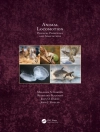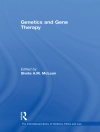In ‘Fat and Blood, ‘ S. Weir Mitchell intricately weaves a narrative that delves into the intricate relationship between physiological health and moral character, set against the backdrop of late 19th-century American society. This medical romance explores themes of gender, identity, and the cultural anxieties surrounding weight and corporeality, employing a prose style that is both accessible and richly descriptive, reflective of the era’s fascination with the interplay of science and literature. Mitchell’s work not only offers a captivating story but also serves as a lens through which to examine contemporary anxieties regarding health and societal expectations. S. Weir Mitchell was a prominent physician and writer whose dual expertise in medicine and literature profoundly informed his work. Experiencing firsthand the complexities of wealth and health, as well as the societal implications of physical appearance, Mitchell drew upon these personal observations and medical insights to craft narratives that resonate with readers. His background in neurology and his concerns about the effects of social change on women’s health in his time are woven into the fabric of ‘Fat and Blood, ‘ making it a significant contribution to both literature and medical discourse of the period. For readers interested in the intersection of health, society, and literature, ‘Fat and Blood’ offers a compelling exploration of these themes. Mitchell’s engaging storytelling and keen psychological insights not only entertain but also provoke thought about the cultural constructs of body image—making this work an essential read for anyone interested in the evolution of American literature and medical thought.
Tentang Penulis
Silas Weir Mitchell (1829–1914) was a prominent American physician and author, celebrated for his contributions to neurology and the literary arts. In his eclectic career, Mitchell combined his medical expertise with a passion for literature, yielding a unique blend of science and fiction that has fascinated readers for more than a century. Mitchell’s seminal work, ‘Fat and Blood: And How to Make Them’ (1877), remains an important text in the history of medicine, reflecting his research on the rest cure, which he developed for the treatment of nervous diseases, particularly neurasthenia. His therapies often included complete bed rest, isolation, and overfeeding, controversial methods that drew a mix of praise and dissent from the medical community. The book not only offers an insight into the medical practices of the time but also provides a window into Victorian-era societal expectations regarding health and the body. Mitchell’s literary style, often characterized by a meticulous attention to detail and a profound understanding of the human psyche, has earned him lasting recognition both as a doctor and a writer. His unique voice in fiction was informed by his medical observations, and through characters and narratives, he frequently engaged with the health issues and social challenges of his era. Though his medical methods might now be seen as outdated, his contributions to literature and his influence on the intertwining of medical narratives within fiction remain pertinent to contemporary discussions within the health humanities.












